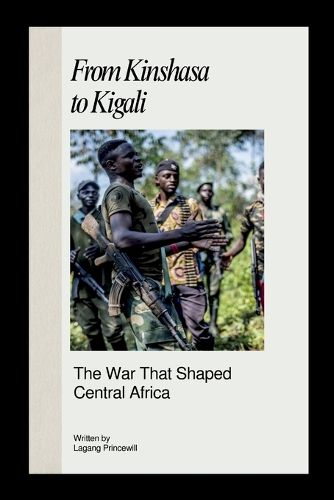Readings Newsletter
Become a Readings Member to make your shopping experience even easier.
Sign in or sign up for free!
You’re not far away from qualifying for FREE standard shipping within Australia
You’ve qualified for FREE standard shipping within Australia
The cart is loading…






This title is printed to order. This book may have been self-published. If so, we cannot guarantee the quality of the content. In the main most books will have gone through the editing process however some may not. We therefore suggest that you be aware of this before ordering this book. If in doubt check either the author or publisher’s details as we are unable to accept any returns unless they are faulty. Please contact us if you have any questions.
BOOK DESCRIPTION
This book unpacks the deep and tangled history of conflict between Rwanda and the Democratic Republic of the Congo, showing how decades of war and political struggles shaped Central Africa. It explores the root causes of the violence, from ethnic tensions to foreign interference, revealing the complex factors that fueled instability in the region. Through detailed accounts, the book traces how the Rwandan Genocide set off a chain of events that led to prolonged war in the DRC.
By examining the involvement of regional and global powers, the book highlights the broader political and economic interests that influenced the war. It looks at how neighboring countries and international actors played a role, sometimes escalating tensions rather than resolving them. The narrative also sheds light on the human suffering caused by the conflicts, from mass displacement to economic devastation, making it clear that these wars were not just about politics but about people's lives.
Ultimately, the book provides a thorough understanding of how these wars reshaped Central Africa's political and social landscape. It explains how the region continues to feel the effects of these conflicts, influencing governance, security, and regional alliances today. By connecting past events to the present, the book offers a crucial perspective on the ongoing challenges and hopes for peace in this part of the world.
$9.00 standard shipping within Australia
FREE standard shipping within Australia for orders over $100.00
Express & International shipping calculated at checkout
This title is printed to order. This book may have been self-published. If so, we cannot guarantee the quality of the content. In the main most books will have gone through the editing process however some may not. We therefore suggest that you be aware of this before ordering this book. If in doubt check either the author or publisher’s details as we are unable to accept any returns unless they are faulty. Please contact us if you have any questions.
BOOK DESCRIPTION
This book unpacks the deep and tangled history of conflict between Rwanda and the Democratic Republic of the Congo, showing how decades of war and political struggles shaped Central Africa. It explores the root causes of the violence, from ethnic tensions to foreign interference, revealing the complex factors that fueled instability in the region. Through detailed accounts, the book traces how the Rwandan Genocide set off a chain of events that led to prolonged war in the DRC.
By examining the involvement of regional and global powers, the book highlights the broader political and economic interests that influenced the war. It looks at how neighboring countries and international actors played a role, sometimes escalating tensions rather than resolving them. The narrative also sheds light on the human suffering caused by the conflicts, from mass displacement to economic devastation, making it clear that these wars were not just about politics but about people's lives.
Ultimately, the book provides a thorough understanding of how these wars reshaped Central Africa's political and social landscape. It explains how the region continues to feel the effects of these conflicts, influencing governance, security, and regional alliances today. By connecting past events to the present, the book offers a crucial perspective on the ongoing challenges and hopes for peace in this part of the world.